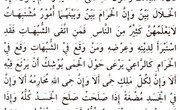Grammar enables the language to function by commanding universality and predictability of the rules of structure. Languages across geographies and cultural traditions share many of the same basic rules of grammar, which is why some linguists like Noam Chomsky, for instance, argue that rules of grammar are innate and that all human minds are naturally equipped with a universal grammar. The main characteristics of traditional grammar relate to usage, diction, style and punctuation.
Usage: Parts of Speech
Traditional grammar organizes words based on eight different parts of speech. The parts of speech are verbs, nouns, pronouns, adjectives, adverbs, prepositions, conjunctions and interjections. Individual words can function as different parts of speech, so they are identified by their use in a particular instance. The parts of speech are important to identify because they determine how sentences are organized and punctuated.
Diction
Diction is the proper use of words. In language, there are different words and phrases for different contexts, so there is no such thing as a universally correct word or phrase. Problematically, words are arbitrary and cultural-specific, having different meanings for different people. However, words must convey or transmit meaning to function, and diction ensures that words work to communicate and express meaning by enforcing their rational and appropriate use.
Style: Sentence Structure
Conventional grammatical rules mandate that a sentence contain both a subject and a predicate. A subject is a person, place, thing or idea that acts in the sentence. A predicate is the verb in the sentence that can appear in the active or passive voice. Subjects and predicates may be complex, in which case the contain several words, and they may be supplemented with clauses, introductory phrases, prepositional phrases or other sentence parts. However, a sentence is incomplete without a subject and predicate.
Style: Spelling
Grammar also requires correct spelling. Generally, words must be spelled correctly according the language used. Sometimes, no equivalent of the word is available in which case the word must be italicized or quoted, depending on the formatting style used by the writer. Homonyms, which are words that share pronunciation but not spelling, must be spelled correctly. Also, correct spelling includes proper use of uppercase and lowercase letters. For instance, proper nouns require the first letter to be capitalized.
Proper Punctuation
Traditional grammar is characterized by proper punctuation. The basic rule of punctuation requires that each sentence conclude with a punctuation mark, whether a period, a question mark or an exclamation point. Beyond ending punctuation marks, sentences should use punctuation marks when appropriate to make the written sentence readable. Common internal punctuation marks include the comma, colon, semicolon, dash, quotations and parentheses. Rules govern the appropriate use of each of these marks.
Related Articles
References
Writer Bio
Audrey Farley began writing professionally in 2007. She has been featured in various issues of "The Mountain Echo" and "The Messenger." Farley has a Bachelor of Arts in English from the University of Richmond and a Master of Arts in English literature from Virginia Commonwealth University. She teaches English composition at a community college.










